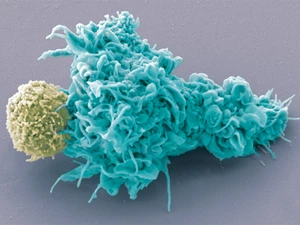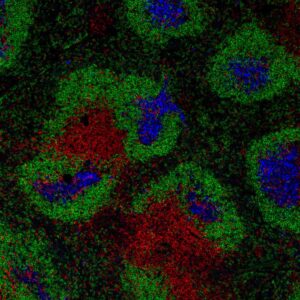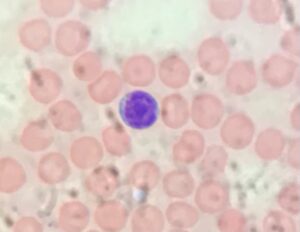Every single day for the past month (at least), we have been hearing a lot about the ability of our body to fight infection. This high influx of information can be overwhelming and confusing. So in this post, I decided to go back to the basics. Now that we know about the “location” of the immune system, I will give a general overview of the steps that take place during an immune response. An immune response is a set of reactions that happen inside our body, which together, have the goal of defending us from foreign invaders. So let’s get right into it…
Our built-in defense system can be divided into two branches, each branch is responsible for performing a distinct set of functions carried out by specific cell types, at different points in time. And by now you can guess, that its beauty is the combination of all these mechanisms together. To make it easier, I will start with an analogy. I have to admit that I love analogies, as it allows me to visualize hard processes making it more palpable, so I hope that helps you too.

Field emission scanning electron microscope showing the interaction between a T cell (an adaptive immune cell) pseudo-colored in yellow, and a dendritic cell (which helps in the link between the innate and the adaptive immune system) pseudo-colored in blue. Image by Olivier Schwartz and the Electron Microscopy Core Facility, Institut Pasteur.
The first layer: general but fast
Let’s imagine that you were doing the dishes and you realized that the sink is leaking, making a complete mess. Your first instinct is to go and search for something to control the problem as fast as possible. This tool won’t be very specific to fix your problem, as you probably don’t have that lying around your kitchen. But you think that a regular tape might do the job, at least for now. This explains the first branch of our immune system: the innate immune system! This system is composed of various mechanisms that allow us to detect a threat and give a general response. Innate immune cells are not very specific to the current infectious agent, but they can recognize different molecules that are broadly present in different categories of pathogens (which are microorganisms that cause diseases).
So the innate immune system is fast-acting, but not very specific. Therefore it is crucial at the early phase of the infection. Many times, the innate immune system is enough to clear the infection, and you are good to go! But sometimes, you need some extra help, and this is when the next branch of the immune system is activated.
The second layer: slow but specific (and so cool)
So if the “not very specific” tape you found in your kitchen was not enough to stop the leakage, you need to go get something more precise. Otherwise, the leakage will continue and it might damage your whole kitchen. This is when the adaptive immune system kicks in! This system is composed of cells that are designed to recognize the specific pathogen you are infected with.
That means that our immune system is able to generate a very high number of cells, each with a different specificity. Together, these cells can recognize every single pathogen we encounter during our lifetime (side note: this still blows my mind! I will definitely be expanding on this subject very soon). The coolest thing about this branch of the immune system is that although it is slow acting and it needs lots of energy, its specificity is essential to fight many different infections.
But there is more! Let’s say that the specific tape you got did a great job and your sink is now leak-free, so what do you do? You keep that tape! You want to be ready if this ever happens again…. lo and behold, in a month you see another hole. But at this point, you have the exact tool you need to fix the problem and you also know what you are doing.
So, if you ever get infected again with the same pathogen, you already have the adaptive immune system ready to fight! This response will not only be faster (you have the tape already, or your high number of specific immune cells) but also more efficient. These immune cells which are known as memory cells are actually better than your naive cells (which are the cells that have never fought during an infection). So the combination of higher number and better quality, allows us to respond faster and more efficiently to a secondary infection. Don’t get me wrong, the innate immunity will also kick in in the secondary infection, but the adaptive immunity will be faster than it was in during the primary infection.
Ok, so this might be starting to sound familiar…
Yes, this is exactly how vaccines work! Vaccines are designed to activate the innate immune system, but most importantly, the adaptive immune system. This will lead to the generation of memory cells that are specific to the pathogen you are being vaccinated against. Now you have immunity to this microorganism. So, if you ever get naturally infected by this pathogen at a later time point, you got your memory cells ready. The higher number and better quality are what give us the protection we all want.
But this does not only happen during vaccination. Natural immunity happens all the time. Generally, once you get infected by a new pathogen, the innate, then the adaptive immune response will kick in. Memory cells will be generated and immunity acquired!
But we all know that for every rule there is an exception, and in immunology, it is not different. Not too long ago it was accepted that the ability to generate memory was a characteristic of only the adaptive immune system. But now we know that some innate immune cells are also able to acquire memory. So keep that in mind!
There are so many amazing ways in which cells, from both the adaptive and the innate immune system, act to help us fight infections. The combination of these mechanisms is what provides us with protection.
We have been evolving in the presence of pathogens which helped us develop this beautiful system. But the tricky part is, that these pathogens have also been evolving with us. This interaction allows them to develop many different ways to evade the immune system, causing us harm. Therefore, scientists have to not only study the immune system but also its interaction with different pathogens. So at this point, you see the beauty, right?! But don’t worry, I will still be back next week!
From your immunologist – in training,
Stefanie Valbon



